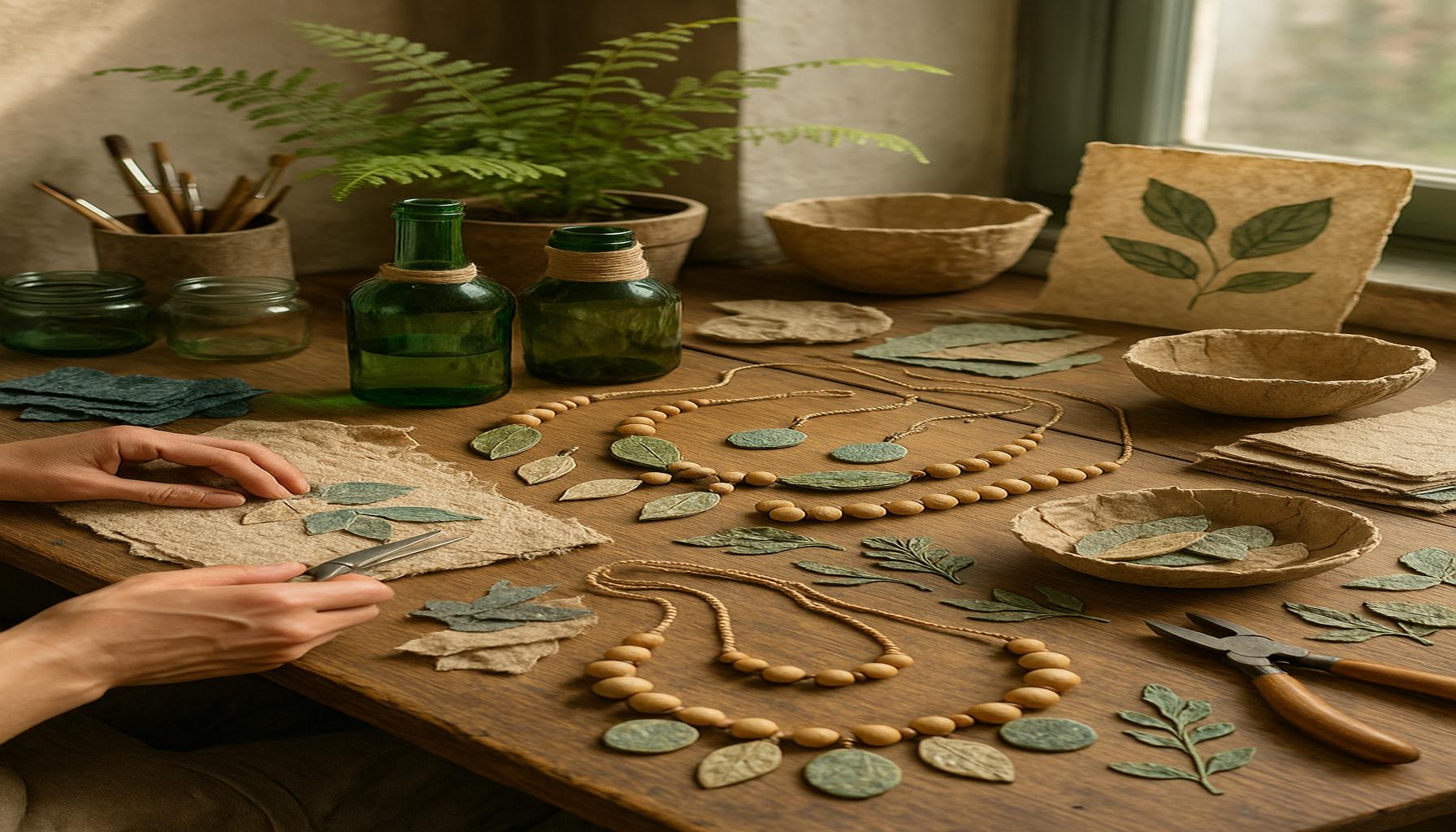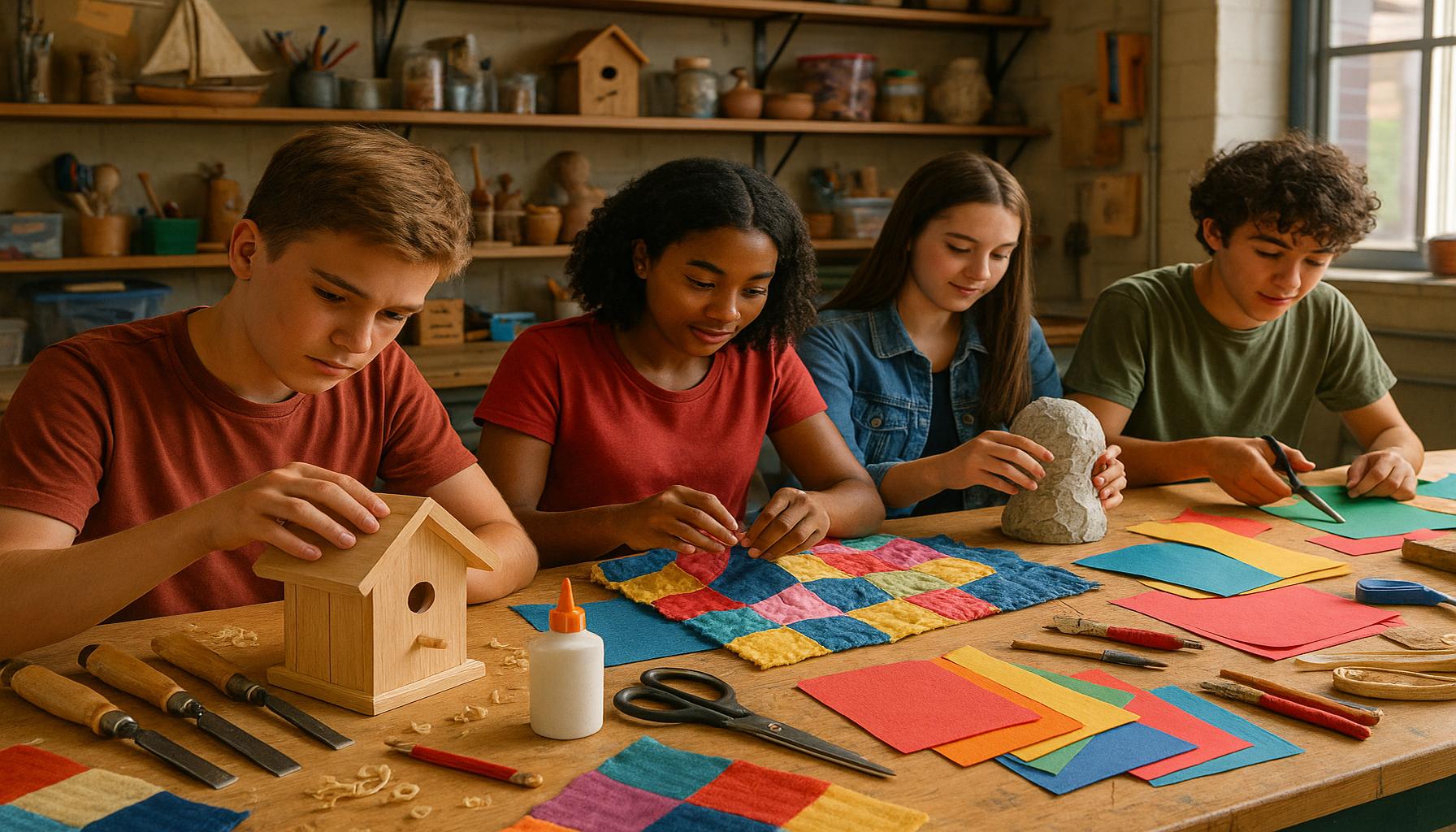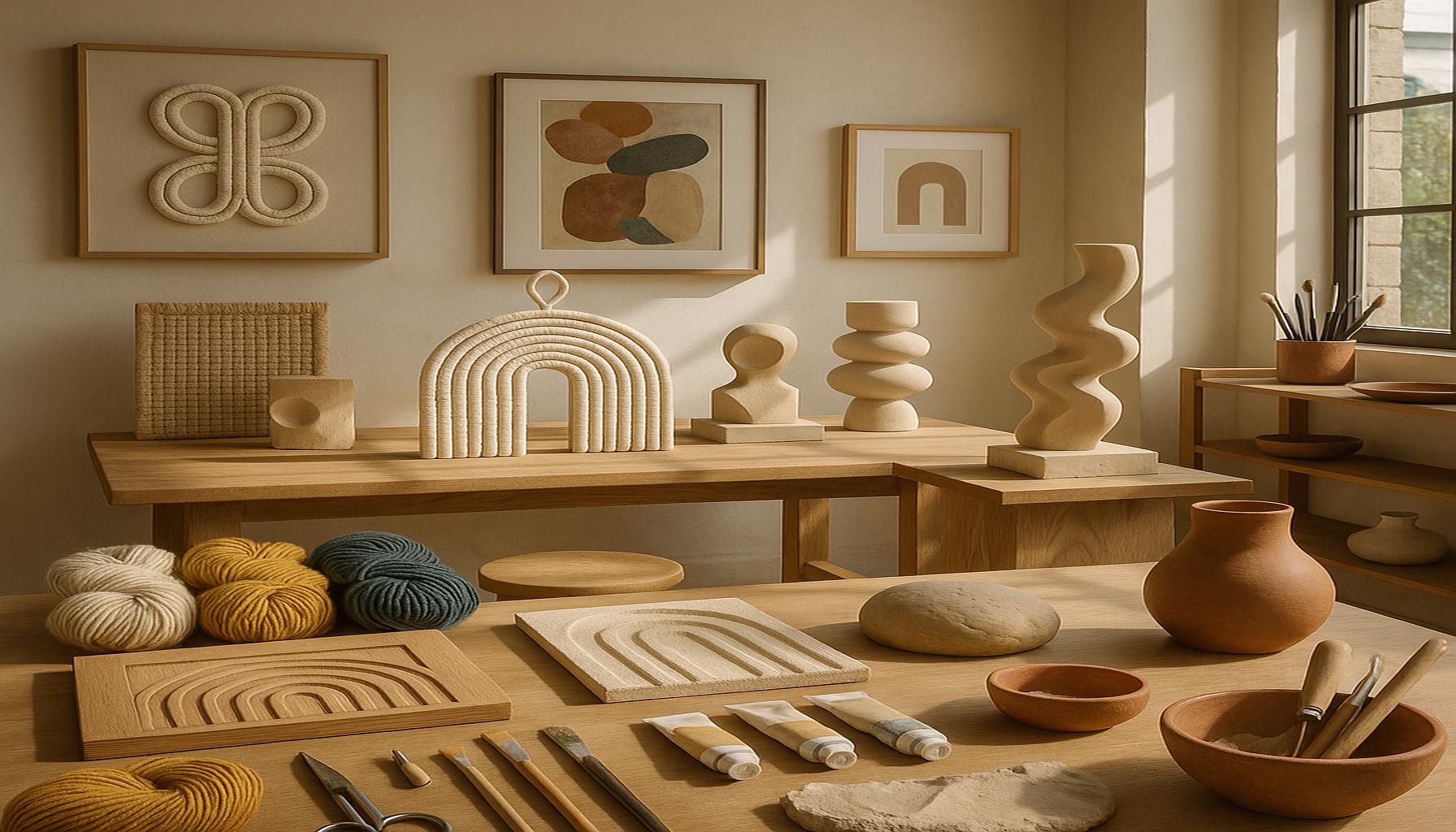Crafting as a Form of Occupational Therapy: The Importance of Creation in the Rehabilitation Process
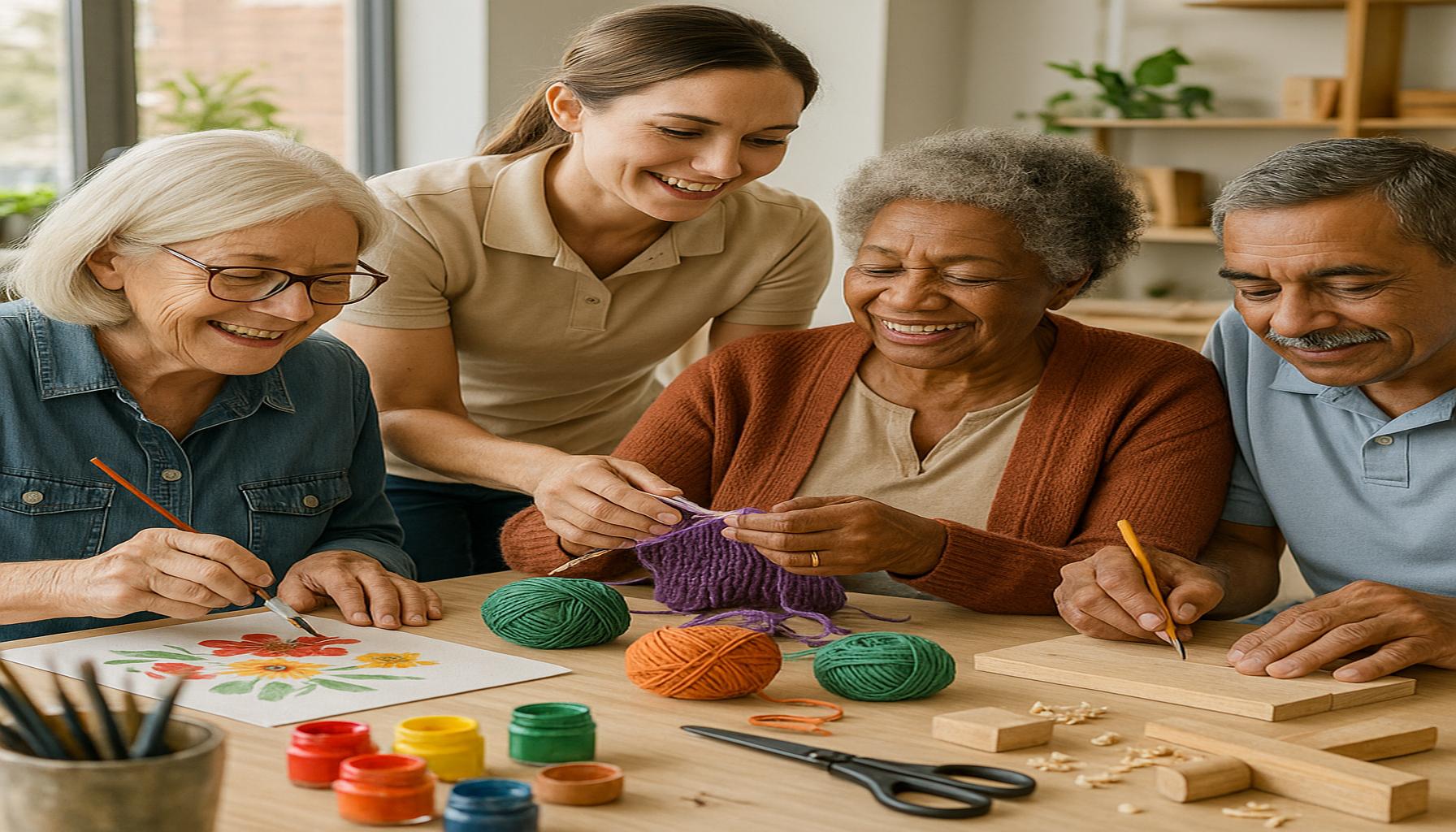
Understanding the Benefits of Crafting in Occupational Therapy
In recent years, crafting has emerged as a vital tool in the field of occupational therapy. It offers a unique blend of creativity and rehabilitation, ensuring that individuals not only recover physically but also engage emotionally and mentally. This multifaceted approach allows patients to tap into their artistic potential while simultaneously addressing therapeutic goals. By understanding this relationship, we can reshape our perspectives on healing and recovery.
Crafting encompasses a wide range of activities, from pottery and painting to knitting and woodworking. These activities can significantly aid in the rehabilitation process through various means, including:
- Enhanced Motor Skills: Activities like knitting not only encourage creativity but also improve fine motor skills essential for daily living. The repetitive movements involved in these crafts enhance dexterity, revealing their therapeutic value for patients recovering from conditions such as stroke or injury.
- Stress Relief: Crafting serves as a form of mindfulness, providing a much-needed distraction from stressors. Engaging in creative tasks lowers cortisol levels, promotes relaxation, and can even decrease symptoms of anxiety and depression, creating a soothing environment for individuals grappling with emotional challenges.
- Boosted Self-Esteem: Completing a project fosters a sense of achievement and confidence. Crafting offers tangible results, and the act of creating something from scratch can significantly enhance an individual’s perception of their own abilities, especially important for those recovering from physical setbacks.
- Social Connection: Group crafting sessions act as a safe space for social interaction, combating feelings of isolation. Workshops or classes provide opportunities for individuals to connect, share experiences, and develop supportive relationships, which are vital for emotional well-being during recovery.
Research indicates that individuals undergoing therapy who integrate creativity into their routines tend to experience quicker recovery rates. For instance, a study by the American Journal of Occupational Therapy found that patients who participated in regular crafting sessions exhibited more substantial improvements in their psychological well-being compared to those who did not.
As we delve deeper into this topic, we will uncover the scientific principles behind crafting as a form of occupational therapy. Through expert interviews and case studies, we will explore how professionals are revolutionizing patient care through creative expression. This exploration promises to reveal that crafting can be an integral part of the rehabilitation journey, transforming not just the healing of the body but uplifting the spirit as well.
Stay tuned to discover how the act of creating serves as both a therapeutic tool and a bridge to recovery, encouraging a holistic approach that values the interplay of art and healing.
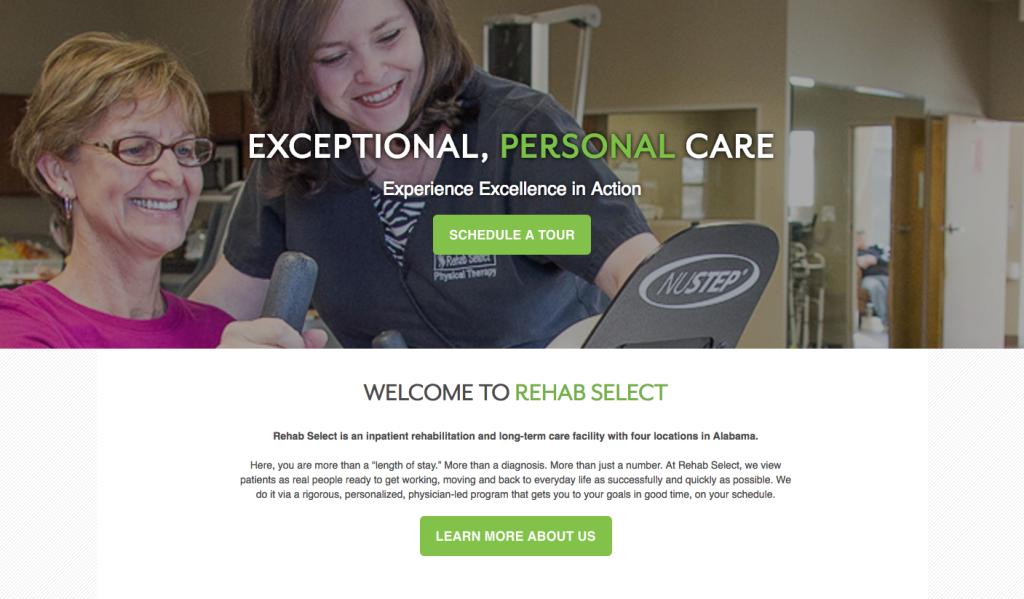
DISCOVER MORE: Click here to delve into crafting’s modern impact
The Therapeutic Effects of Crafting on Rehabilitation
The significance of crafting in the realm of occupational therapy extends beyond mere creative expression; it encapsulates an essential component of the rehabilitation process. Through various craft activities, patients can rediscover their abilities, cope with emotional disturbances, and rebuild their identity in the wake of injury or illness. Here, we will explore the diverse therapeutic effects of crafting that contribute to a comprehensive approach towards recovery.
At the core of occupational therapy lies the principle of allowing individuals to engage in meaningful activities. Crafting serves as a robust means of facilitating this engagement. The act of creating not only piques interest but also invokes a sense of purpose. It plays a vital role in reinforcing both physical and mental capabilities. Some of the notable therapeutic benefits of crafting include:
- Cognitive Stimulation: Activities such as painting or jewelry making require planning, problem-solving, and memory recall. These cognitive demands provide mental exercises, which can aid in preventing cognitive decline and enhancing focus—critical factors for individuals recovering from brain injuries or those battling cognitive disorders.
- Improved Emotional Expression: Art and crafting can serve as powerful outlets for emotions. The creative process provides a non-verbal avenue for individuals to express feelings that may be difficult to articulate. This form of emotional release can address issues related to trauma, grief, or anxiety, fostering healing in a unique way.
- Increased Focus and Mindfulness: Crafting enthusiasts often experience a state akin to meditation. The focused attention required in crafting not only provides a mental escape from distress but also promotes mindfulness. Being present in the moment can ground individuals and alleviate the feelings of overwhelm common in recovery.
- Goal Setting and Achievement: Completing a project—whether it’s a beautiful quilt or a hand-carved piece of furniture—instills a sense of accomplishment. Setting and achieving goals, however small, enables individuals to recognize their progress, fostering a positive self-image and reinforcing the belief in their ability to regain control over their lives.
Moreover, incorporating crafting activities can harness the power of routine in a patient’s recovery journey. The regular engagement in creative tasks can establish structure and predictability, both of which are beneficial during times of upheaval. By integrating crafting into their daily routines, individuals can create a sense of normalcy that may have been disrupted by their health challenges.
As we continue to unravel the intricate connection between crafting and occupational therapy, it becomes increasingly clear that the importance of creation in rehabilitation cannot be overstated. Not only does it provide a pathway to physical improvement, but it also nurtures a holistic sense of well-being that empowers individuals to embrace their journey towards recovery.
Exploring the Therapeutic Benefits of Crafting
Crafting is not just a leisurely activity; it plays a pivotal role in rehabilitation processes, enhancing both physical and emotional recovery. The act of creating something tangible fosters a sense of accomplishment and can significantly improve an individual’s self-esteem. By engaging in crafting, therapy participants often experience an increase in motivation, as the finished product serves as a visible representation of their efforts and progress.One of the primary advantages of using crafting in occupational therapy is its ability to enhance fine motor skills. Activities such as knitting, sewing, or sculpting require precise movements and coordination, which can be particularly beneficial for individuals recovering from injuries or surgeries. This targeted approach helps build muscle strength and dexterity, essential components in regaining independence in daily tasks.In addition to physical benefits, crafting can contribute to improved mental health. The process allows individuals to express their emotions creatively, providing an outlet for stress relief and anxiety reduction. Studies indicate that engaging in artistic activities can, in fact, lower cortisol levels—resulting in a calmer, more focused state of mind. By navigating the intricacies of a craft, individuals also develop problem-solving skills and patience, both of which are key elements in the rehabilitation journey.The social aspect of crafting cannot be overlooked either. Group crafting sessions provide therapeutic environments where participants can interact, share experiences, and support one another. This sense of community fosters connections that can significantly impact emotional well-being, particularly for those recovering from traumatic experiences or significant life changes.To further illustrate the profound impact crafting can have in occupational therapy, consider the following table:
| Therapeutic Advantage | Impact on Rehabilitation |
|---|---|
| Enhanced Fine Motor Skills | Activities improve coordination and strength. |
| Emotional Expression | Crafting provides an outlet for creativity and stress relief. |
| Social Interaction | Group crafting fosters connections and support networks. |
This overview highlights the multifaceted advantages of integrating crafting into occupational therapy. Engaging in the crafting process not only nurtures the creative spirit but also aids in the holistic recovery of individuals, making it an essential aspect of modern rehabilitation practices. By immersing oneself in creation, individuals pave the way for both personal growth and meaningful recovery experiences.
DISCOVER MORE: Click here to learn how gardening boosts mental health
Crafting as a Catalyst for Social Connection
In addition to individual therapeutic benefits, crafting facilitates social interactions that are vital for emotional healing and rehabilitation. Communities built around crafting often serve as support networks, allowing individuals to share experiences and foster friendships in a comforting environment. For many, participating in group crafting sessions can revive a sense of camaraderie and belonging that may have been lost due to illness or injury.
Group crafting activities provide an opportunity for individuals to collaborate, whether by taking part in workshops, attending craft classes, or joining community centers dedicated to the arts. Engaging in crafting alongside others can strengthen social skills that may have weakened during a person’s journey through adversity. The simple act of sharing tools, exchanging ideas, or working collectively on a project can significantly diminish feelings of isolation. As they create, these individuals also learn from one another, which in turn can boost confidence and foster new relationships.
Interdisciplinary Approaches to Crafting in Therapy
The integration of crafting within various therapeutic disciplines highlights its versatility in addressing diverse patient needs. Occupational therapists, art therapists, and physical therapists often collaborate to create tailoring-crafted interventions that maximize recovery potential. For example, an occupational therapist may combine manual dexterity activities with art projects, enhancing both fine motor skills and creative expression while providing a holistic approach to an individual’s care.
Such interdisciplinary practices are particularly evident in rehabilitation centers across the United States, where therapists recognize the multifaceted benefits of crafting. By aligning craft-based activities with specific rehabilitation goals, therapists not only focus on improving physical skills but also tap into creativity as a conduit for emotional and cognitive growth.
The Role of Personal Expression in Crafting
Each crafted piece can embody a narrative, serving as a visual representation of one’s personal growth and unique journey through recovery. Patients often view their creations as more than just objects; these tangible results become symbols of resilience, marking progress and milestones along their paths to wellness. Whether it’s a painted canvas that reflects triumph over depression or a handmade bracelet that signifies recovery from addiction, these creations deepen the personal relationship individuals forge with their therapeutic processes.
Moreover, personal expression in crafting can lead to significant breakthroughs in self-awareness. When patients engage with their artwork, they often uncover insights about their emotions and experiences, paving the way for deeper therapeutic conversations. This exploration can be especially beneficial for those who may struggle with traditional forms of communication, as the creative process opens up dialogues that might not have occurred otherwise.
Crafting for All Ages
What makes crafting particularly unique within occupational therapy is its adaptability to all age groups and backgrounds. From children developing fine motor skills through simple crafting projects like drawing and collage making to older adults engaging in more complex tasks like woodworking or quilting, the flexibility of craft activities ensures everyone can participate. Programs that incorporate crafting in rehabilitation settings are now gaining traction across various demographics, enabling a broader audience to benefit from its therapeutic effects.
The generational sharing fostered through crafting also enriches the therapeutic experience. For instance, structured intergenerational projects can connect youth with seniors, allowing them to exchange skills and stories as they create together. This not only enhances the value of crafting as a social tool but also facilitates community building—a critical element for emotional health in rehabilitation.
Ultimately, crafting as a form of occupational therapy goes beyond mere artistic endeavors; it intertwines physical, cognitive, and emotional healing in a way that continues to gain recognition across healthcare disciplines. As patients embrace their creativity, they simultaneously embark on a holistic journey towards recovery, discovering strength not only within themselves but also in the community around them.
DISCOVER MORE: Click here to learn how to start your own sustainable garden
Conclusion: Embracing Creativity in Rehabilitation
In the ever-evolving landscape of rehabilitation, the role of crafting as a form of occupational therapy cannot be overstated. From promoting fine motor skills and enhancing cognitive functions to fostering deep social connections and personal expression, crafting serves as a multifaceted tool that addresses a wide array of therapeutic needs. The integration of crafting in rehabilitative practices empowers individuals of all ages, allowing them to harness their creativity as a means of healing.
As we reflect on the insights shared throughout this article, it becomes clear that crafting transcends traditional forms of therapy, creating an engaging and inclusive environment that amplifies emotional growth and personal resilience. The stories and tangible creations that emerge from crafting not only mark significant milestones in the rehabilitation process but also remind us of the profound connection between creativity and healing.
Furthermore, the interdisciplinary collaboration between various therapeutic disciplines highlights a commitment to holistic care, positioning crafting as a vital element within rehabilitation frameworks. As facilities across the United States increasingly adopt craft-based interventions, they awaken to the vast potential that creative expression holds in fostering recovery.
Ultimately, by embracing crafting as an essential component of occupational therapy, we can transform the rehabilitation experience into one that is not only productive but also enriching and empowering. For those embarking on their healing journeys, engaging in the act of creation opens doors to new opportunities for self-discovery, community connection, and enduring wellness. The path to recovery is filled with artistry and potential, encouraging all to explore the boundless benefits of crafting in their lives.
